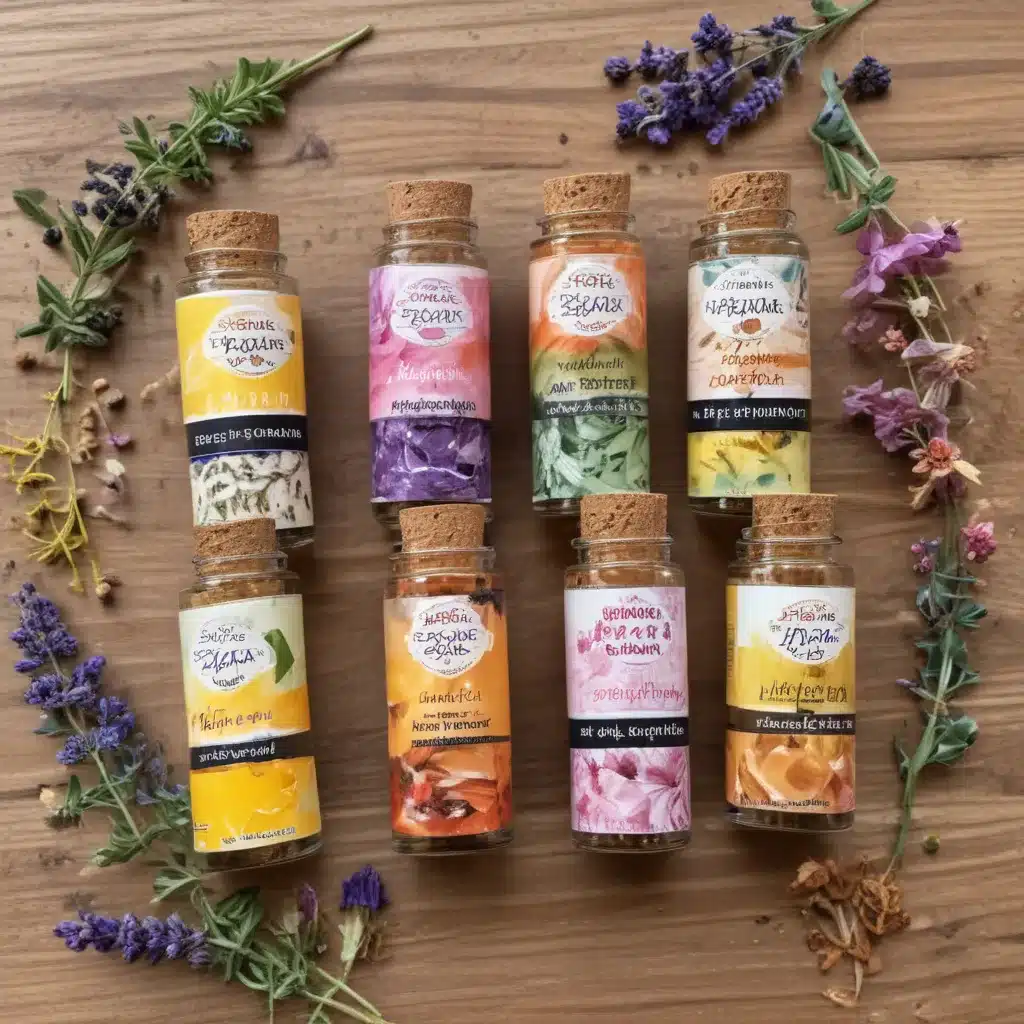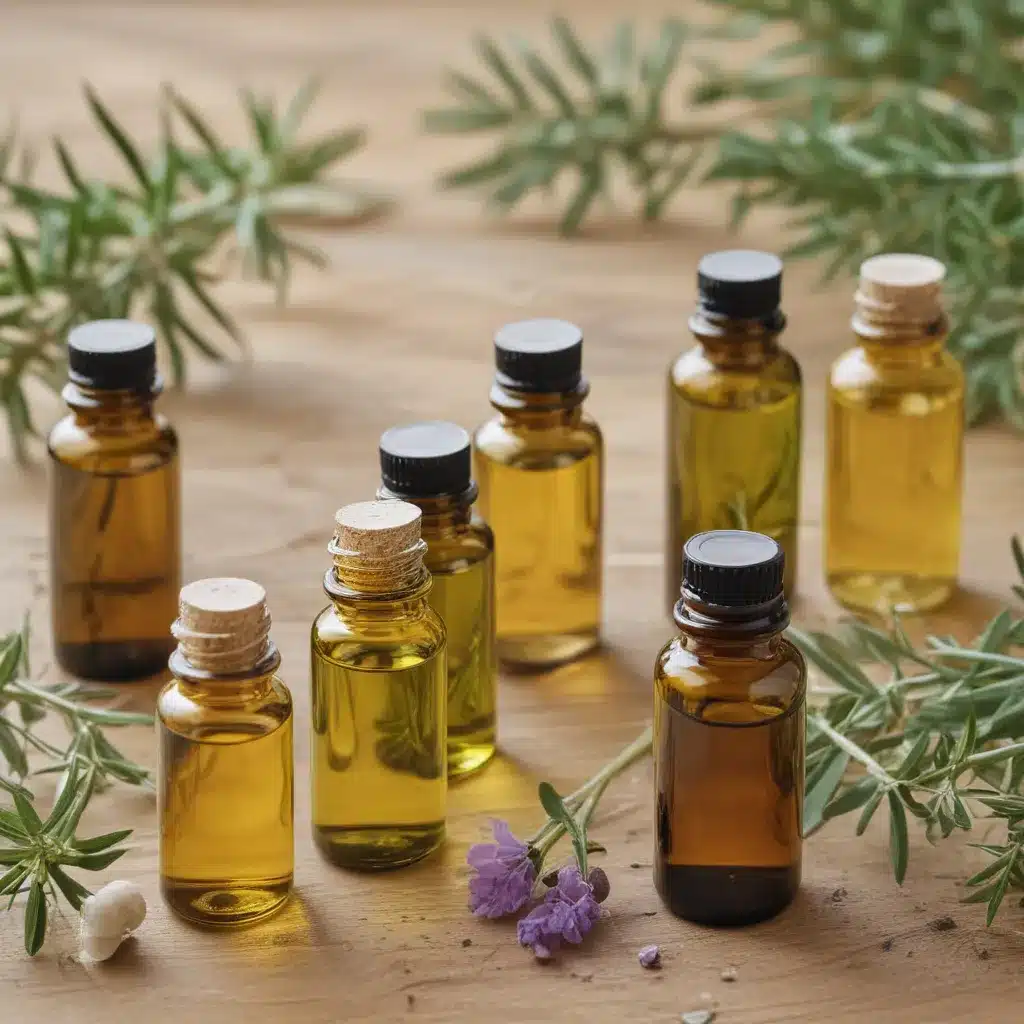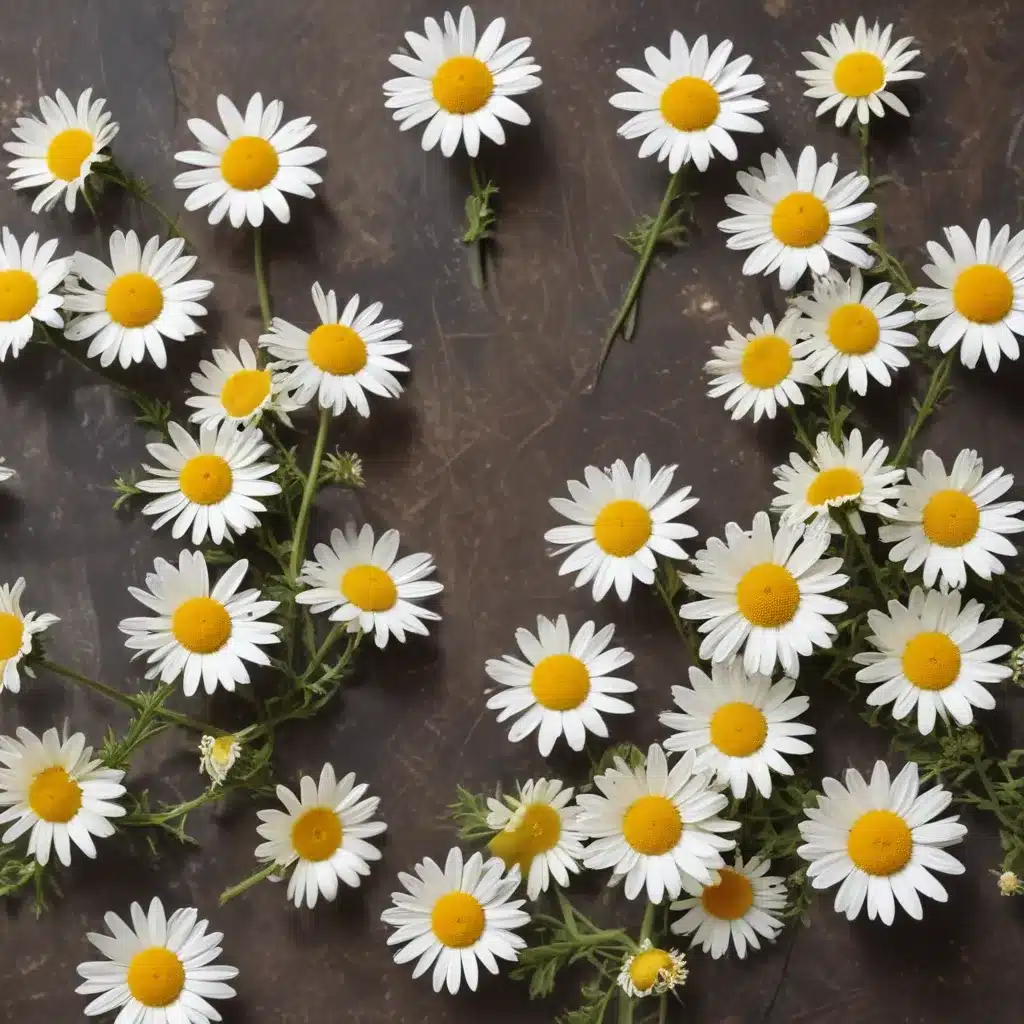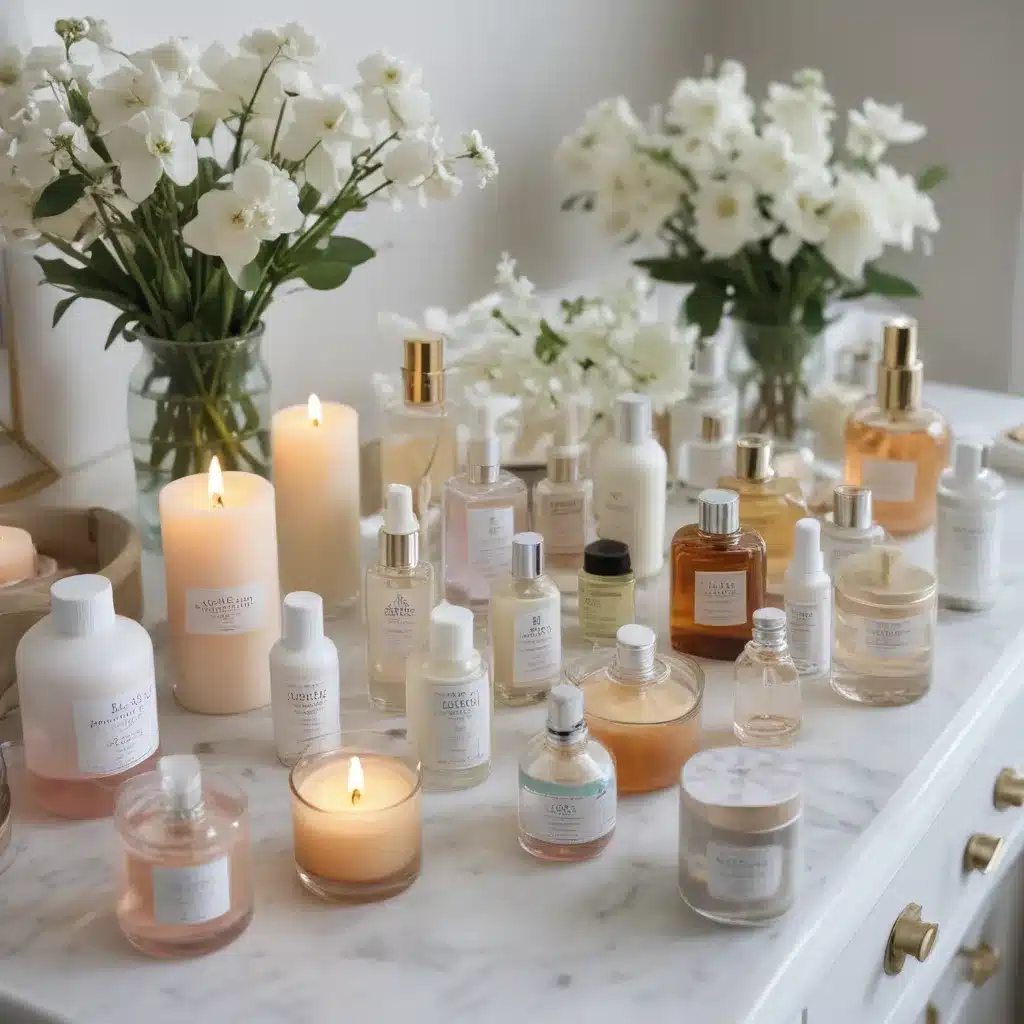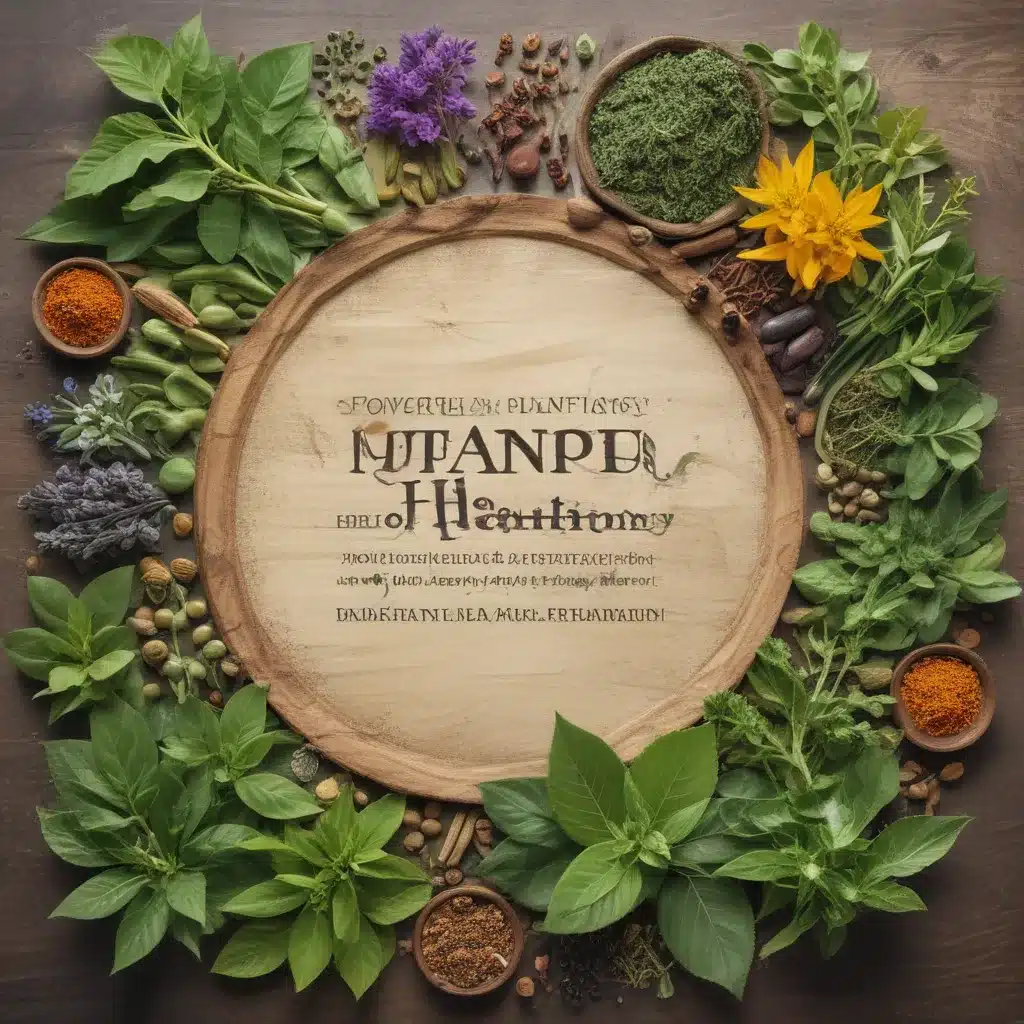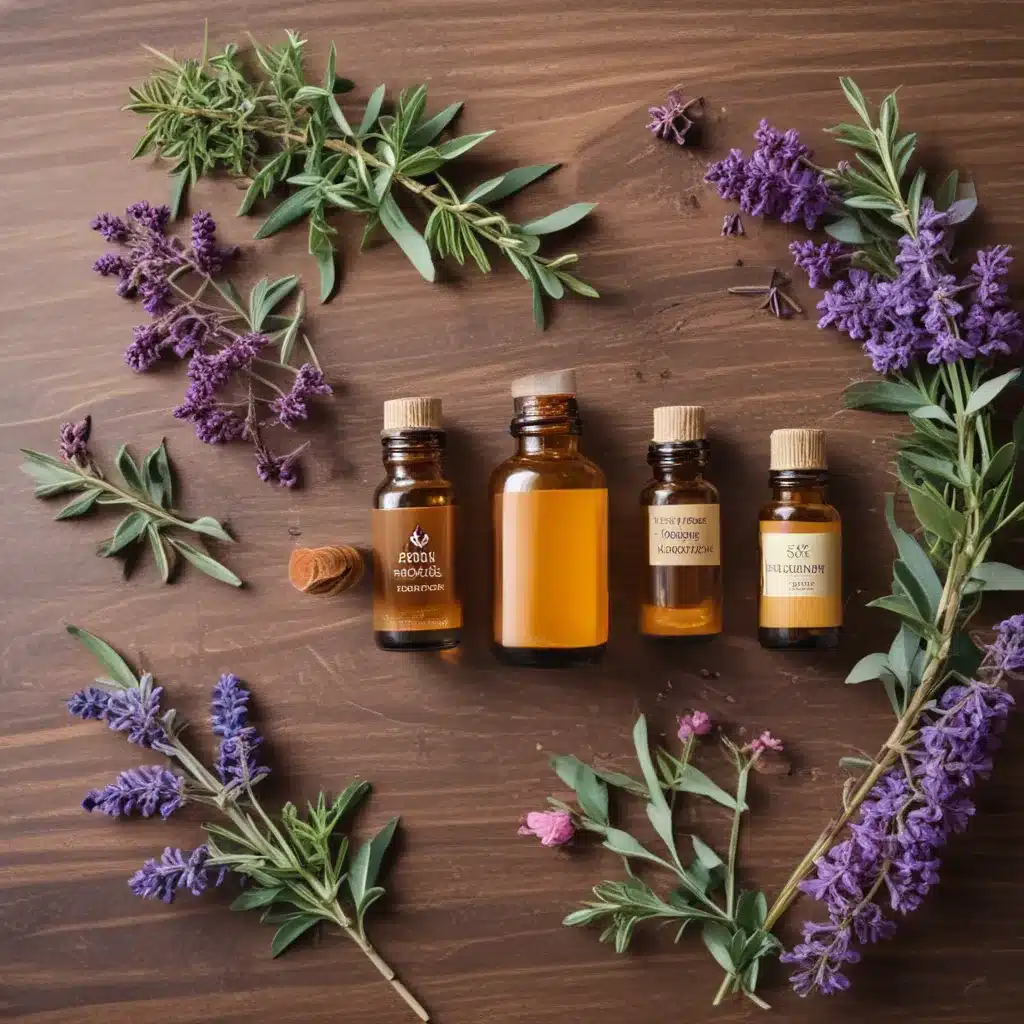
What is Aromatherapy?
I’ll never forget the first time I experienced the power of aromatherapy. It was a grey, dreary day, and I was feeling sluggish and uninspired. But then I stepped into a cozy aromatherapy studio, and the air was filled with the most delightful scents – earthy notes of frankincense, citrusy bursts of lemon, and calming waves of lavender. In an instant, my mood lifted, my mind felt clearer, and I was brimming with a sense of renewed energy and vitality. That’s the magic of aromatherapy – the way it can transform our minds, bodies, and spirits with the simple act of inhaling aromatic plant extracts.
But what exactly is aromatherapy, and how does it work? Aromatherapy is the practice of using essential oils and other aromatic plant compounds to promote physical, mental, and emotional well-being. These potent plant extracts are distilled from flowers, leaves, stems, bark, roots, and even fruits, and each one has its own unique set of therapeutic properties. When we inhale the scent of an essential oil or apply it to our skin, the aromatic molecules interact with our olfactory system (the part of the brain responsible for smell) and trigger a cascade of physiological and psychological responses.
The Science Behind Aromatherapy
The science behind aromatherapy is fascinating. When we inhale an essential oil, the aromatic molecules travel through the nasal cavity and directly stimulate the olfactory receptors in the upper nasal cavity. These receptors then send signals to the olfactory bulb, which is part of the limbic system – the emotional center of the brain. This is why certain scents can evoke such powerful emotions and memories.
But the benefits of aromatherapy don’t stop there. The aromatic molecules can also enter the bloodstream through the lungs or the skin, and then travel to various organs and systems throughout the body. This allows the therapeutic compounds in the essential oils to exert their effects on a physiological level, influencing things like hormone production, inflammation, and even cellular function.
For example, studies have shown that the compounds in lavender essential oil can help reduce anxiety, promote relaxation, and even improve sleep quality. Meanwhile, the citrusy notes of lemon oil are known to have uplifting and energizing effects, while the earthy aromas of frankincense and myrrh can help calm the mind and reduce stress.
The History of Aromatherapy
Aromatherapy is by no means a new practice – in fact, it has been used for thousands of years in a wide variety of cultures around the world. The ancient Egyptians, Greeks, and Romans all incorporated aromatic plant extracts into their daily lives, using them for religious ceremonies, medicinal purposes, and even cosmetic applications.
One of the earliest recorded uses of aromatherapy comes from ancient Egypt, where resins like frankincense and myrrh were burned as incense to invoke the favor of the gods. The Egyptians also used aromatic oils for embalming the dead and as part of their elaborate beauty rituals. Meanwhile, in ancient Greece, Hippocrates – the father of modern medicine – recognized the healing power of aromatic plants and recommended their use for a variety of ailments.
Fast forward to the 20th century, and the modern practice of aromatherapy can be traced back to the work of a French chemist named René-Maurice Gattefossé. In the 1920s, Gattefossé accidentally burned his hand in a laboratory explosion and discovered that lavender oil had a remarkable ability to heal and soothe the wound. This prompted him to further explore the therapeutic properties of essential oils, and he went on to publish the first book on the subject, “Aromatherapie,” in 1937.
Since then, the field of aromatherapy has continued to grow and evolve, with researchers and practitioners around the world exploring the myriad ways in which these aromatic plant extracts can enhance our physical, mental, and emotional well-being.
The Benefits of Aromatherapy
The potential benefits of aromatherapy are truly astounding, and the list just keeps growing as more and more research is done in this fascinating field. From reducing stress and anxiety to improving sleep quality and boosting mood, the applications of aromatherapy are wide-ranging and incredibly versatile.
One of the most well-studied benefits of aromatherapy is its ability to alleviate stress and promote relaxation. Studies have shown that inhaling the calming scents of lavender, chamomile, or bergamot can help lower cortisol levels (the primary stress hormone) and induce a state of deep relaxation. This can be particularly helpful for individuals who struggle with anxiety, insomnia, or burnout.
But the benefits of aromatherapy don’t stop there. These aromatic plant extracts have also been shown to have a positive impact on our physical health. Certain essential oils, like tea tree and eucalyptus, possess potent antimicrobial and anti-inflammatory properties, making them useful for treating skin conditions, respiratory issues, and even boosting the immune system.
And let’s not forget the cognitive and mood-enhancing effects of aromatherapy. Scents like citrus, peppermint, and rosemary have been linked to improved focus, memory, and cognitive function, while floral notes like jasmine and ylang-ylang can help alleviate symptoms of depression and uplift the spirit.
Incorporating Aromatherapy into Your Life
Now that you’ve learned a bit about the history, science, and benefits of aromatherapy, you might be wondering how you can start incorporating these aromatic plant extracts into your daily life. The good news is that there are endless ways to enjoy the therapeutic properties of essential oils, and the options are only limited by your imagination.
One of the most popular and accessible ways to experience the benefits of aromatherapy is through the use of diffusers. These handy devices use heat or ultrasonic vibrations to disperse the essential oil molecules into the air, allowing you to breathe in the soothing scents and enjoy the calming or invigorating effects.
Another simple way to enjoy aromatherapy is by creating your own custom blends and applying them topically to the skin. The aromatic molecules can be absorbed through the pores, allowing the therapeutic compounds to exert their effects on a physiological level. You can mix and match different essential oils to create your own unique scent profiles and target specific wellness goals, such as stress relief, improved sleep, or boosted mood.
For those who prefer a more immersive aromatherapy experience, you might consider trying a relaxing aromatherapy massage or sinking into a soothing essential oil-infused bath. The combination of touch, scent, and touch can be incredibly powerful in promoting a deep sense of calm and well-being.
No matter how you choose to incorporate aromatherapy into your life, the key is to experiment and find the methods that work best for you. With so many diverse essential oils to explore, the possibilities are truly endless. So why not take a deep breath, let the calming or invigorating aromas fill your senses, and see how aromatherapy can enhance your overall health and well-being?
Choosing and Using Essential Oils Safely
As you begin your journey into the world of aromatherapy, it’s important to keep safety in mind. Essential oils are highly concentrated plant extracts, and while they offer a wealth of therapeutic benefits, they must be used with caution and care.
First and foremost, it’s crucial to source your essential oils from reputable, high-quality suppliers. Look for organic, pure, and unadulterated oils that are free from synthetic additives or fillers. Reputable brands like Aroma Essential are a great place to start.
When it comes to using essential oils, it’s important to remember that they are highly potent and should never be ingested or applied directly to the skin without proper dilution. Always mix essential oils with a carrier oil, such as fractionated coconut oil or jojoba oil, before applying topically. And be mindful of the oils you’re using, as some can be photosensitive or cause skin irritation if used incorrectly.
It’s also a good idea to do a patch test before using a new essential oil, especially if you have sensitive skin. Apply a small amount of the diluted oil to your inner arm or behind your ear, and wait 24 hours to see if any irritation occurs.
When it comes to diffusing essential oils, be sure to use a well-ventilated space and start with just a few drops. Some individuals may be more sensitive to certain aromas, so it’s important to pay attention to how your body and mind respond.
By following these simple safety guidelines, you can enjoy the incredible benefits of aromatherapy while minimizing any potential risks. Remember, it’s all about finding the right balance and listening to your body’s needs.
Exploring the Diverse World of Essential Oils
With so many different essential oils to choose from, the world of aromatherapy can feel a bit overwhelming at first. But fear not, my fellow aroma enthusiasts! Once you start exploring the diverse array of plant-based extracts, you’ll quickly discover that each one has its own unique character and set of therapeutic properties.
Let’s start with some of the most widely known and beloved essential oils. Lavender, for example, is a true superstar in the aromatherapy world. Its calming, soothing scent has been shown to reduce stress, improve sleep, and even alleviate symptoms of depression. Lemon, on the other hand, is known for its uplifting, energizing effects, making it a great choice for boosting mood and mental clarity.
But the essential oil lineup doesn’t stop there. Peppermint is a refreshing and invigorating option that can help alleviate headaches, improve focus, and even soothe digestive discomfort. Tea tree oil, with its potent antimicrobial properties, is a go-to for supporting immune function and treating skin conditions. And let’s not forget about the earthy, grounding aromas of frankincense and myrrh, which can help calm the mind and promote a sense of inner peace.
As you delve deeper into the world of essential oils, you’ll discover a vast array of other plant-based extracts, each with their own unique therapeutic benefits. Ylang-ylang, for instance, is known for its ability to regulate the nervous system and promote feelings of joy and self-acceptance. Bergamot, with its citrusy, floral notes, can help alleviate anxiety and lift the spirits. And the list goes on, from the woody, resinous scent of cedarwood to the herbaceous, earthy tones of rosemary.
The key is to approach your essential oil exploration with an open and curious mindset. Experiment with different scents, pay attention to how your body and mind respond, and don’t be afraid to mix and match to create your own custom blends. After all, the beauty of aromatherapy is that it’s a highly personalized practice, and the right essential oils for you might be quite different from what works for someone else.
Crafting Your Own Aromatherapy Blends
One of the most rewarding aspects of exploring the world of aromatherapy is the opportunity to craft your own customized essential oil blends. By combining different plant-based extracts, you can create unique scent profiles that target your specific wellness goals and personal preferences.
But where do you even begin when it comes to blending essential oils? Fear not, my fellow aroma enthusiasts, for I’m about to share some of my top tips and strategies for crafting your own aromatic masterpieces.
First and foremost, it’s important to understand the basic principles of essential oil blending. Generally speaking, you’ll want to start with a “base” note, which provides the foundation of your blend. These are typically the heavier, more grounding scents, like frankincense, myrrh, or vetiver. Then, you can layer in “middle” notes, which add depth and complexity, such as ylang-ylang, geranium, or patchouli. Finally, finish off your blend with some “top” notes, which are the lighter, more uplifting aromas, like citrus, peppermint, or eucalyptus.
But of course, the beauty of essential oil blending is that there are no hard and fast rules. Feel free to experiment and play around with different combinations to see what works best for you. Maybe you’re looking to create a calming, restorative blend to help you unwind after a long day – in that case, you might want to try a base of sandalwood, a middle note of roman chamomile, and a top note of clary sage. Or perhaps you’re in need of a refreshing, energizing pick-me-up – a blend of grapefruit, rosemary, and black pepper could be just the ticket.
Another helpful tip when it comes to blending essential oils is to start with small quantities and gradually increase the ratios until you find the perfect balance. A good rule of thumb is to use about 3-5 drops of each essential oil per 1 tablespoon of carrier oil. And don’t be afraid to keep refining your blend – the more you experiment, the better you’ll get at creating your own unique aromatic signatures.
Finally, remember to have fun and let your creativity shine! Blending essential oils is a truly therapeutic practice in and of itself, so embrace the process and allow your senses to guide you. Who knows, you might just stumble upon the next big aromatherapy hit.
Aromatherapy in Your Daily Life
Now that you’ve learned all about the fascinating world of aromatherapy, you might be wondering how you can start incorporating these aromatic plant extracts into your daily life. The good news is that there are endless ways to enjoy the benefits of essential oils, and the options are limited only by your imagination.
One of the most popular and accessible ways to experience the power of aromatherapy is through the use of essential oil diffusers. These handy devices use heat or ultrasonic vibrations to disperse the aromatic molecules into the air, allowing you to breathe in the soothing scents and enjoy the calming or invigorating effects. Whether you’re looking to create a relaxing ambiance in your living room or boost your mood and concentration while working, a well-placed diffuser can work wonders.
But the benefits of aromatherapy don’t have to be confined to your home. You can also take your essential oil blends on the go, using them in a variety of creative ways. For instance, you might want to try adding a few drops to a personal essential oil inhaler or a DIY aromatherapy roll-on for a quick mood boost throughout the day. And don’t forget about the power of topical application – you can mix your favorite oils with a carrier oil and apply them to your pulse points, temples, or the soles of your feet for targeted therapeutic effects.
Speaking of topical application, let’s not forget about the incredible versatility of essential oils when it comes to self-care and beauty routines. From soothing muscle aches with a homemade massage oil to creating a luxurious, spa-like facial steam, the possibilities are truly endless. You can even incorporate essential oils into your haircare regimen, using them to promote scalp health, add shine, and tame frizz.
And let’s not forget about the power of essential oils when it comes to creating a cozy, comforting atmosphere in your home. Try adding a few drops of lavender or bergamot to your laundry, or sprinkle some cedarwood or pine on your fireplace for a warm, inviting ambiance. You can even use essential oils to create your own all-natural cleaning products, infusing your living space with delightful aromas while keeping it free of harsh chemicals.
The key is to experiment and find the ways of incorporating aromatherapy that work best for you and your lifestyle. Whether you’re looking to unwind after a long day, boost your mood and energy, or simply create a more harmonious, sensory-enriched environment, the world of essential oils is your oyster. So, go forth, my fellow aroma enthusiasts, and let the power of these plant-based extracts transform your daily life in ways you never imagined!
Conclusion: Embracing the Aromatic Journey
As we’ve explored the vast and fascinating world of aromatherapy, I hope you’ve come to see the incredible power and versatility of these plant-based extracts. From their rich historical roots to their cutting-edge scientific applications, essential oils truly have the ability to transform our lives in profound and meaningful ways.
But the beauty of aromatherapy is that it’s not just about the science or the history – it’s about the personal, sensory experience. It’s about the way a single whiff of lavender can instantly transport you to a serene, peaceful state, or how the invigorating scent of peppermint can snap you out of an afternoon slump. It’s about the joy of crafting your own custom blends, experimenting with new aromas, and discovering which ones resonate most deeply with your mind, body, and spirit.
So, as you continue on your aromatic journey, I encourage you to approach it with an open mind, a curious spirit, and a willingness to let your senses guide you. Savor the experience, allow yourself to be surprised and delighted, and don’t be afraid to venture outside your comfort zone. After all, the true magic of aromatherapy lies in the personal connection we forge with these remarkable plant extracts.
Who knows where your exploration of essential oils might lead you? Perhaps you’ll uncover a new favorite scent that becomes an indispensable part of your daily self-care routine. Or maybe you’ll stumble upon a blend that transports you to a blissful state of relaxation, helping you to find the peace and rejuvenation you’ve been craving. The possibilities are endless, and the journey is yours to discover.
So, take






